How To Find Garbage Cans And Handle Your Trash In Japan

With few garbage cans and lots of sorting rules, Japan can be a hard place to get rid of trash. This article explains the system of sorting garbage, where to find trash cans, and tips for throwing away waste.
It can be a little difficult to throw away trash in Japan. Garbage in Japan must be carefully separated into categories, and there are usually no garbage bins on the streets. It can be almost impossible to find a trash can anywhere other than convenience stores. For those not used to this, the system may seem to take time and effort. However, these troublesome rules one way Japan can preserve its clean, tidy cityscapes.
This article teaches the rules about sorting through burnable garbage, non-burnable garbage, recyclable garbage, and all the other complicated trash disposal rules in Japan.
How Do You Throw Away Garbage in Japan?
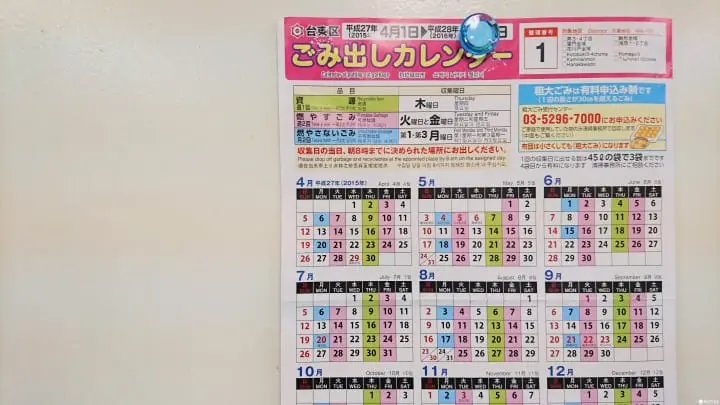
When throwing away household garbage in Japan, you first have to check what trash category is picked up on that day. Japan has fixed days for each trash category, and certain areas may define some items differently or have different sorting categories.
There will be instructions on how to throw out garbage for those who are staying in Japan for a few weeks to travel at hotels or a private lodging with a host.

For those who have fewer instructions or those living in Japan, when throwing out the garbage, you must put it in a designated garbage bag, then place it in the pickup area the night before the designated pick-up day. This is because waste collectors come to take the trash away early in the morning. Some places will cover their garbage pickup areas with netting to keep away pigeons and other animals that will tear open the bags.
City halls and town halls in Japan have garbage sorting rules available to view on their homepages, and if you go directly to your city hall, you should be able to receive a guide for garbage disposal rules in your native language. People who are staying for an extended period of time, or who plan to live in Japan in the future, should research this information, or try to confirm with their hotel or lodging.
5 Things to Remember When Throwing Away Trash in Japan
While tourists don’t have to worry about household garbage, if you buy a drink can or bento box when walking around outside, you will need to throw your trash somewhere in the city.
1. When Searching for a Garbage Can, Look for Convenience Stores
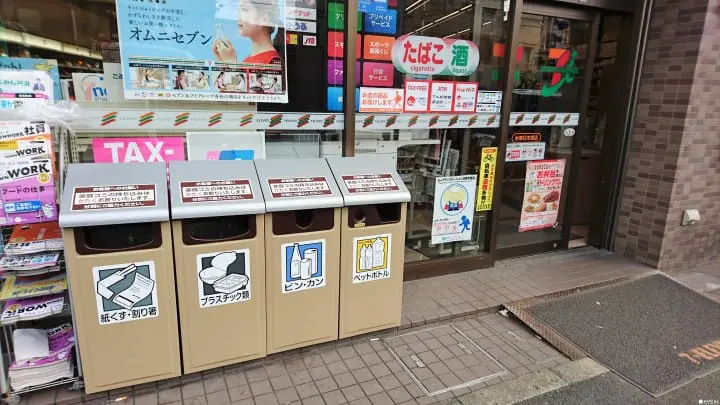
There are not many garbage cans set up around Japanese cities, and it can also be difficult to find them inside train stations. At major stations, due to past incidents where hazardous materials were stuffed into garbage cans, you will no longer see garbage cans for anything other than recyclable garbage.
When you want to toss some trash but can’t find a garbage can, what should you do? The answer is simple: visit the convenience store.

Convenience stores have garbage cans, even though most other places do not. Some convenience stores place theirs outside, while others will have them inside the store or attached to the counter. Here, you can throw your trash away and head off to your next destination unburdened. However, convenience store garbage cans are there for the benefit of store customers. Don’t just throw away your trash and leave. Be considerate enough to buy something, like a snack or a drink.
Again, even at convenience stores, there are strict rules about separating trash, so you need to be careful!
2. Sort by Material and Throw Away Trash Separately
Normally, outside establishments only sort their trash into “recyclable” and “non-recyclable,” but Japanese stores are much more particular with their trash-sorting categories.

Typically there are four major trash categories: burnable, non-burnable, plastic PET bottles and cans/bottles.
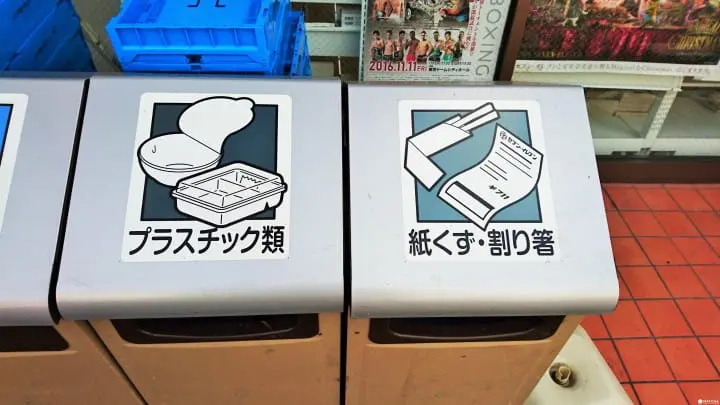
There are generally illustrations denoting plastic, paper scraps and disposable chopsticks on the cans you’re supposed to throw them away in, so you shouldn’t have any issues with mixing where to throw your trash away.
The garbage cans for plastic are for the thin wrappers around souvenirs, as well as the wrappers and caps for PET bottles and the like. Many Japanese people carefully abide by these complicated rules.
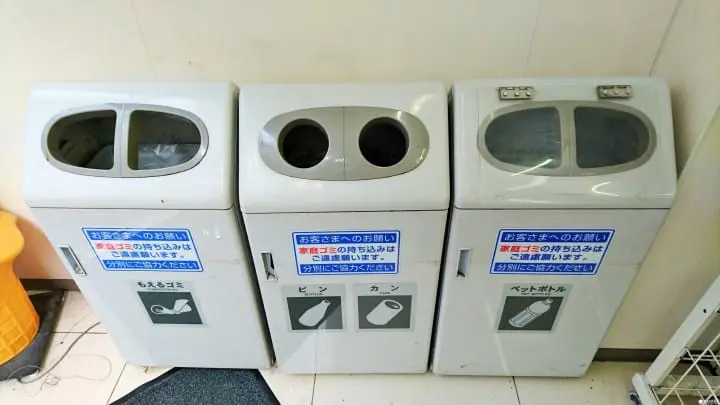
Garbage cans for burnable trash often feature pictures of paper scraps and disposable chopsticks.
3. Throw Away Plastic Bottles and Cans at Vending Machines
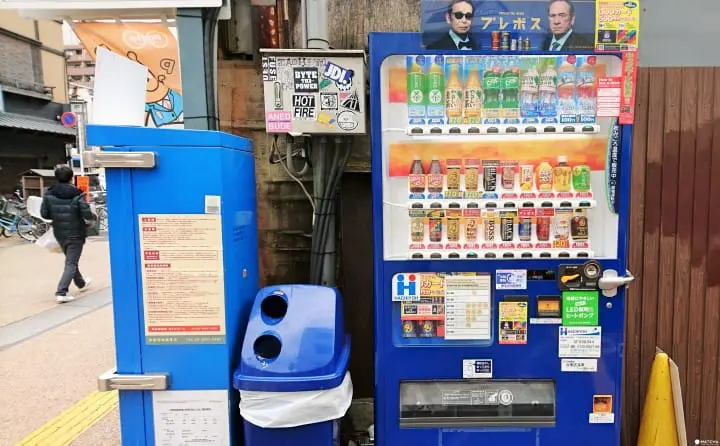
You will see a vending machine on almost every street corner in Japan, and these will be your savior if you have an empty drink in hand. However, the vending machine garbage cans are only for cans and plastic PET bottles.

This garbage can is intended for use by the people who buy drinks at the vending machine, so people who finish their drink can just toss the empty container.
4. There Are Few Garbage Cans at Train Station Platforms
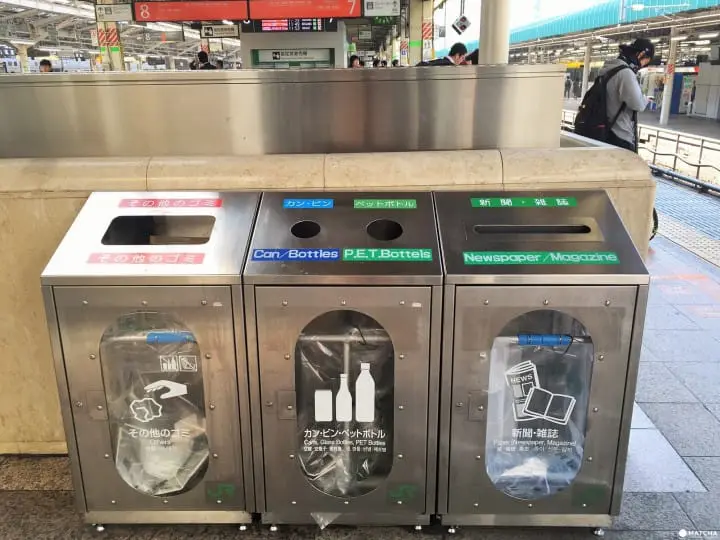
As we mentioned above, it’s rare for Japanese train stations, and especially subway stations, to have garbage cans for anything other than recyclable waste. If there are such cans, most of them are for newspapers and magazines. Lots of working people read the newspaper on their morning commute, and throw it away soon after they get off the train, which is why stations have these reading material-only garbage cans.
5. What Should I Do With Trash That Isn’t Pictured?
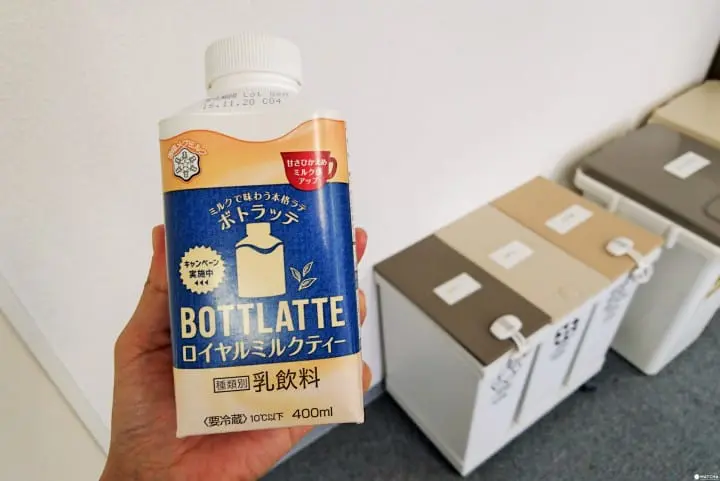
What should you do with trash that isn’t shown on any of the pictures? For example, you will often see this sort of drink in Japan, but where should you dispose of its container?
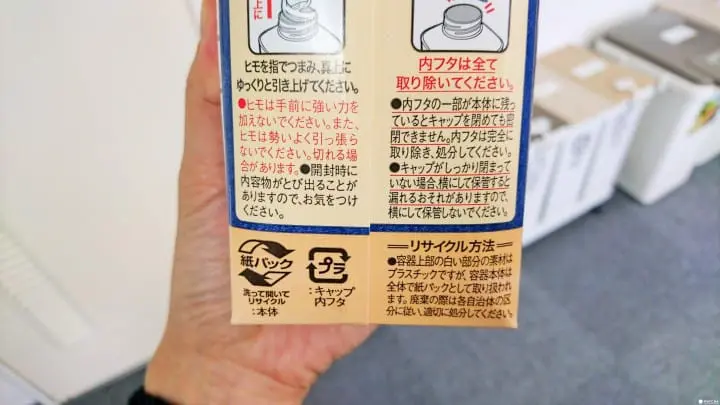
Flip it over and check what the packaging is made of. Even here, Japan’s strict sorting rules make an appearance. The bottle itself is made of paper (紙), and the white upper segment and cap are plastic (プラ). You have to unfold the paper container and throw each piece in the appropriate garbage can (in this case, the paper body goes in burnables, and the cap is thrown into the plastics bin).
Throwing Away Trash in Japan
While Japan’s sparkling streets may leave a deep impression on you, they attained that level of cleanliness because of Japanese garbage sorting rules. While you enjoy Japanese gourmet food and the sights, you mustn’t forget that those things are also the product of diligence and effort.
Read also
This article was translated and edited from Traditional Chinese.





































![[2026 Edition] FORMUAL 1 JAPANESE GRAND PRIX Information](https://resources.matcha-jp.com/resize/720x2000/2025/10/05-245984.webp)


![[2025 Update] Namba's spectacular illuminations! "Namba Hikari Tabi" with approximately 1 million shining lights](https://resources.matcha-jp.com/resize/720x2000/2025/12/12-252825.webp)